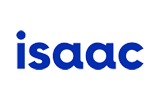Salman Khan, the man who flipped the classroom
por Mariana Fonseca  14 de janeiro de 2013
14 de janeiro de 2013
 He’s coming to Brazil for his first visit – entitled to meet President Dilma Rousseff, the Minister of Education and give a lecture sponsored by the Lemann Foundation – a teacher-turned-celebrity. He had his classes assisted nearly 230 million times in the past seven years and, last year, was considered by Time one of the 100 most influential people in the world. He is Salman Khan, a former student of MIT and Harvard who, unpretentiously, recorded short videos, that goes straight to the point, with the explanation narrated in the background and numbers appearing on a blackboard to help a cousin with difficulties in math. Unknowingly, his classes were no longer just helping Nadia, but relatives, friends and even the children of Bill Gates.
He’s coming to Brazil for his first visit – entitled to meet President Dilma Rousseff, the Minister of Education and give a lecture sponsored by the Lemann Foundation – a teacher-turned-celebrity. He had his classes assisted nearly 230 million times in the past seven years and, last year, was considered by Time one of the 100 most influential people in the world. He is Salman Khan, a former student of MIT and Harvard who, unpretentiously, recorded short videos, that goes straight to the point, with the explanation narrated in the background and numbers appearing on a blackboard to help a cousin with difficulties in math. Unknowingly, his classes were no longer just helping Nadia, but relatives, friends and even the children of Bill Gates.
When they got to YouTube, the videos have become so popular that the educator ditched the financial market to dedicate himself to Khan Academy, which nowadays uses this format to teach math, science, programming and humanities – in times of Oscar and Golden Globe, the teacher even dares to teach, following the formula that worked, French history and the context in which the book Les Miserables was written. With his own academy, Khan was beginning to lead a movement to redesign classrooms worldwide. Redesigning may not even be the best word for what he has been doing. What he has done is flipping the classroom. That’s right: he has placed the class upside down. “While the today’s world requires people creative and with high innovative capacity, the current model reinforces the passivity”, he criticized the existing model to Veja magazine.
The concept of “flipped classroom” has found followers not only in basic education, but also in higher education, as the Porvir has already shown. The idea is to use educational resources recently popularized by technology, such as video classes or virtual environments of certain courses, so that students have contact with the content at home. Thus, time in the classroom is released, so that teachers and students make progress in learning either by doing exercises, answering questions, or by promoting debates. “When I made the video classes I did not know how it would penetrate in school. Then, I began to receive letters from teachers who reported to be flipping the logic of the classroom: the videos were turning homework in school and what was once homework was now turning in class”, said the educator in his TED Talk, 2011.
An infographic, in English, made by Knewton shows how the new logic alters the forms of interaction in the classroom. The moments of exposure, in which students are facing the blackboard, happen less often and students need to, more constantly, rearrange themselves in groups. “When we get rid of the notion of a person delivering the information in front of a classroom at a defined rhythm, this allows us to completely rethink our assumptions about how a classroom or a school can be. We can, then, consider the possibility of having teachers in the same classroom, working with students who have different ages and skills levels”, Khan said in an article in the Times last October.
That is exactly why Khan supports, that, contrary to what many are concerned, the video classes, at home, does not diminish the necessity of a good teacher nor the importance of classroom’s interaction moments. What happens, in fact, is an appreciation of both. “Teachers are using technology to humanize the classroom. They take a situation fundamentally dehumanized and without interaction and transform it into a space of exchange”, he said.
Throughout the week, the Porvir will bring articles related to the visit of Khan and the impact of his video classes in education worldwide. Porvir will, also, be twitting his best phrases during his lecture that will take place in Sao Paulo on Thursday, which will be broadcast via the Lemann Foundation hangout.
Translated by Ana Pagliuso











